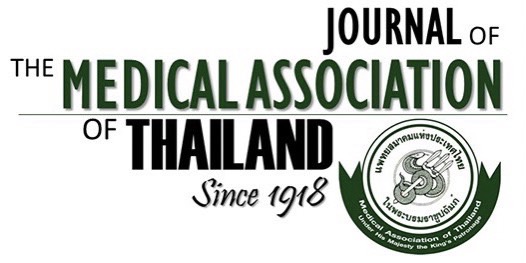Epidemiology of Common Respiratory Virus in Hospitalized Young Children with Wheezing
Nisakorn Kamchan MD*, Araya Satdhabudha MD**, Paskorn Sritipsukho MD***,****, Preeyaporn Vichaiwattana BSc*****, Yong Poovorawan MD*****
Affiliation : * Department of Pediatrics, Thammasat University, Pathumthani, Thailand ** Division of Pulmonology, Department of Pediatrics, Faculty of Medicine, Thammasat University, Pathumthani, Thailand *** Division of Allergy and Immunology, Department of Pediatrics, Faculty of Medicine, Thammasat University, Pathumtani, Thailand **** Center of Excellence in Applied Epidemiology, Thammasat University, Pathumthani, Thailand ***** Center of Excellence in Clinical Virology, Faculty of Medicine, Chulalongkorn University, Bangkok, Thailand
Background : Acute wheezing episodes are frequently associated with respiratory viral infection in children. Publications
worldwide have reported that some respiratory viruses are associated with the induction of acute wheezing. However,
epidemiology of this virus in particular in Thailand has so far been limited.
Objective : To estimate the frequent of respiratory viruses in hospitalized children with acute wheezing.
Material and Method: A prospective study was conducted on children <5 years old, admitted with acute wheezing episodes
from June 2014 to September 2015. Viral pathogens (RSV, rhinovirus, influenza virus, enterovirus 68) were detected in
nasopharyngeal aspiration by polymerase chain reaction (PCR). Clinical data were prospectively recorded.
Results : Among the 74 acute wheezing children, 42 (56.8%) were positive for viral PCR; rhinovirus was the most frequent
detected virus (39%), followed by RSV (11%) and enterovirus 68 (5%). Influenza virus was not detectable. No co-viral
infections. Rhinovirus infection occurred throughout the year. RSV majority occurred in rainy season. While enterovirus 68
infection occurred in August and December. All patients presented with cough and dyspnea (100%). Fever was found in 67
to 100%. Gastro-intestinal symptoms including vomiting and diarrhea were uncommon. Only 10 to 50% of patients improved
after bronchodilator inhaled. Leukocytosis and eosinophil count in rhinovirus was higher than for other respiratory viruses.
Conclusion : Viral infections are the common cause of acute wheezing in children. The pattern of infected viral pathogens
depends on age, season and year. Rhinovirus and RSV are the most frequently detected viruses. Almost all cases have
prodome respiratory symptoms. Rhinovirus may be more related to allergic conditions. However, more research is needed
to confirm this finding.
Keywords : Respiratory virus, Wheezing, Respiratory syncytial virus (RSV), Rhinovirus, Enterovirus 68



